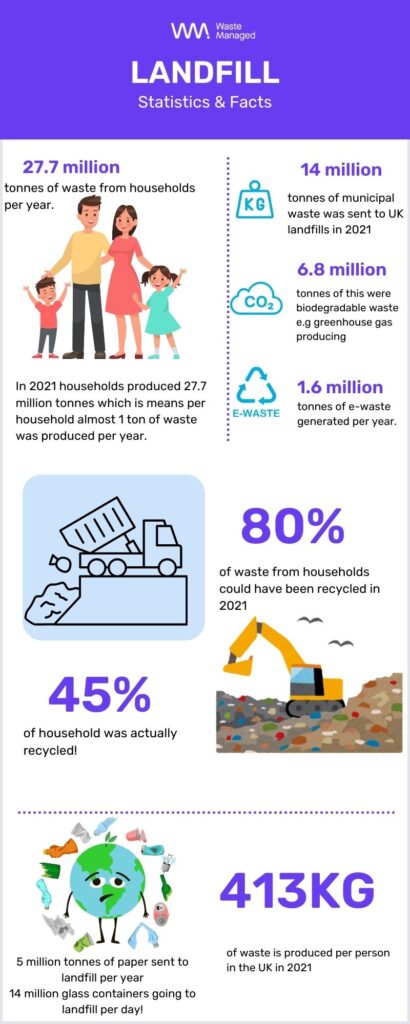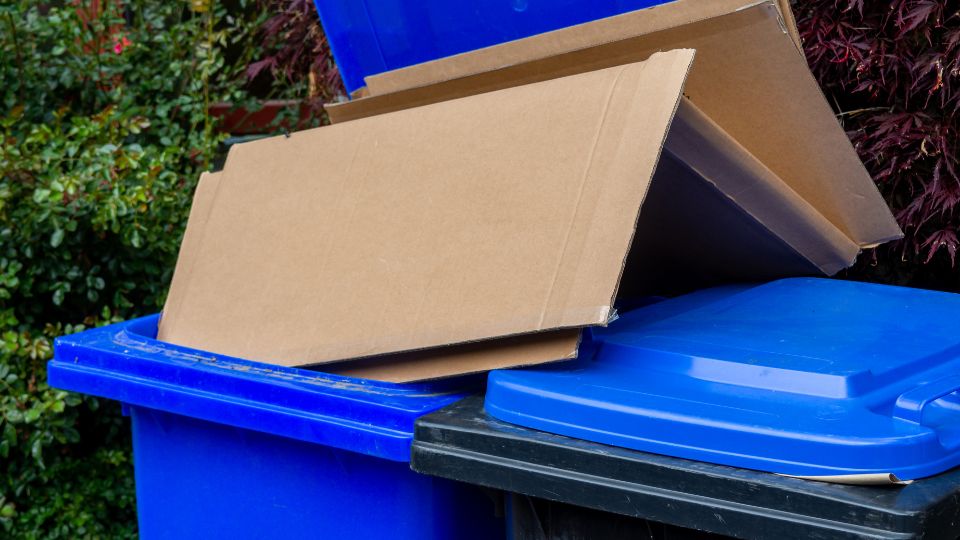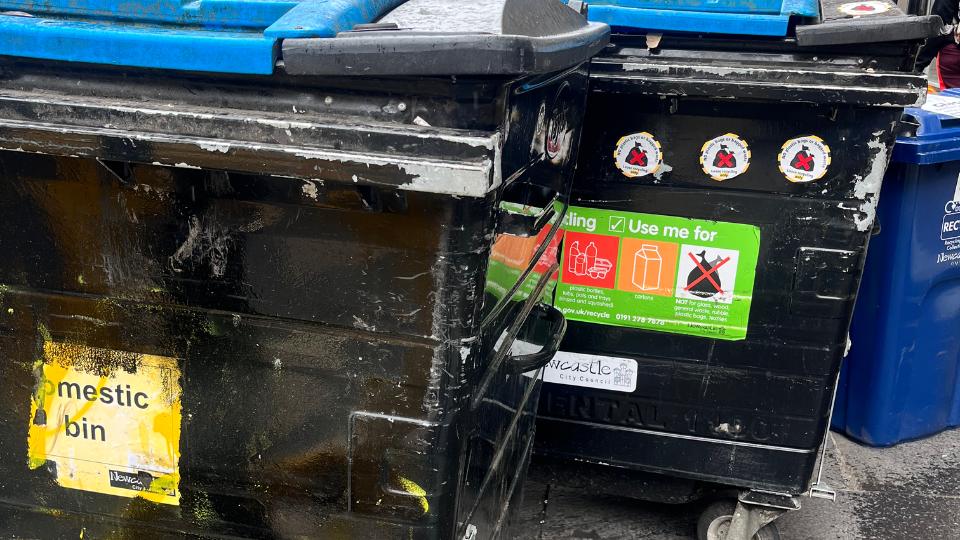
Landfill sites play a crucial role in waste management, but their environmental impact is often underestimated which can be seen from the facts and statistics.
Understanding landfill facts and statistics can help us make more informed decisions about our waste habits and sustainability efforts.
Tables of Contents
- How Much Waste is Going to Landfill in the UK?
- How is Landfill Data Collected?
- 5 Facts About Landfill with Statistics
- How can Landfill be Reduced?
- Conclusion

How Much Waste is Going to Landfill in the UK?
In recent years, the UK has made significant strides in reducing the amount of waste sent to landfill but the facts and statistics show waste sent to landfill remain large.
According to the latest data from the Department for Environment, Food & Rural Affairs (DEFRA), the UK generated approximately 222.2 million tonnes of total waste in 2020.
Out of this, about 8.5 million tonnes were sent to landfill. This marks a decrease from previous years, but it still highlights the ongoing challenge of managing waste sustainably.
Household waste is a significant portion of this figure, with millions of tonnes of food waste, packaging, and other materials ending up in landfill sites each year.
Efforts to increase recycling and composting rates have helped, but there’s still a long way to go.

How is Landfill Data Collected?
Accurate landfill data is crucial for understanding and managing waste. In the UK, landfill data is collected through a combination of methods:
- Waste Management Companies: These companies are required to report the amount and type of waste they handle, including what is sent to landfill.
- Local Authorities: They collect data on household waste and recycling, which is then reported to national databases.
- Environmental Agencies: Agencies like the Environment Agency monitor landfill sites and gather data on waste types and volumes.
- Surveys and Audits: Regular surveys and waste audits are conducted to estimate waste generation and disposal patterns.
This data is provides a comprehensive picture of waste management practices, helping to inform policy and identify areas for improvement.
5 Facts About Landfill with Statistics
- Declining Landfill Use: Since 2000, the amount of waste sent to landfill in the UK has decreased by over 60%, thanks to increased recycling and waste prevention measures.
- Greenhouse Gas Emissions: Landfills are a significant source of methane, a potent greenhouse gas. In 2020, UK landfills emitted approximately 13.6 million tonnes of CO2 equivalent.
- Landfill Capacity: As of 2020, there are around 500 operational landfill sites in the UK, but many are nearing capacity. Finding new sites is challenging due to environmental and community concerns.
- Resource Recovery: Modern landfills are designed to recover resources, such as capturing methane for energy production. Around 60% of landfill gas emissions were captured and used in 2020.
- Recycling Impact: Increasing the recycling rate by just 5% could divert hundreds of thousands of tonnes of waste from landfills each year, significantly reducing environmental impact.

How can Landfill be Reduced?
Reducing landfill waste requires a multifaceted approach involving individuals, businesses, and governments. Here are some effective strategies:
- Increase Recycling: Enhancing recycling programs and making recycling more accessible can significantly reduce landfill waste. Public awareness campaigns and incentives can encourage more people to recycle.
- Composting: Promoting composting of organic waste, such as food and garden waste, can divert a substantial amount of biodegradable material from landfills, reducing methane emissions.
- Waste-to-Energy: Investing in waste-to-energy technologies can help convert waste into usable energy, thus decreasing waste sent to landfills.
- Product Design: Encouraging manufacturers to design products with longer lifespans and greater recyclability can reduce the overall waste generated.
- Policy and Legislation: Governments can implement stricter regulations on waste disposal and provide incentives for waste reduction initiatives, helping to minimise landfill usage.

Conclusion
Understanding landfill facts and statistics is crucial for anyone interested in waste management and environmental sustainability.
While the UK has made progress in reducing landfill waste, ongoing efforts are essential to further decrease the environmental impact.
By increasing recycling, promoting composting, investing in waste-to-energy, and implementing effective policies, we can continue to reduce our reliance on landfills and move towards a more sustainable future.








